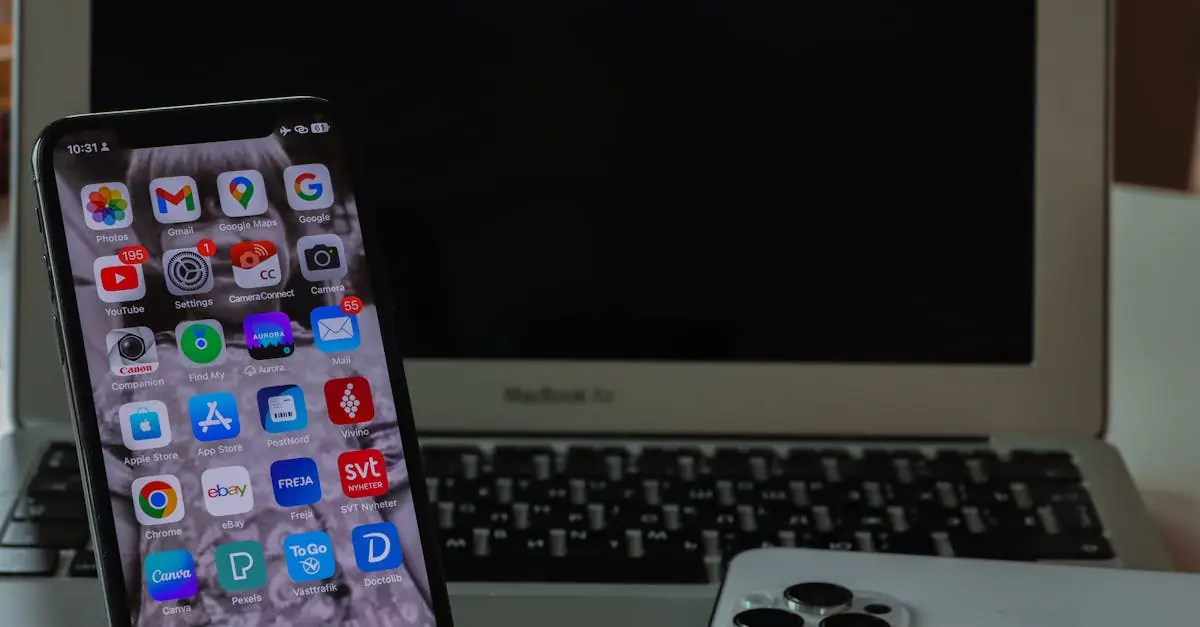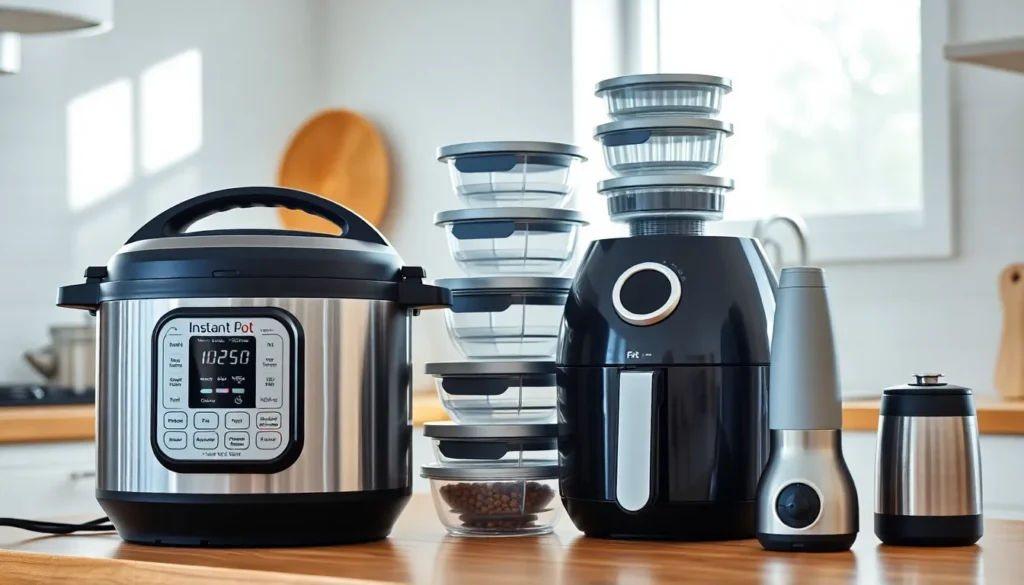Ever found yourself staring at your Chromebook, wishing it could magically sync with your iPhone? Well, wish no more! Connecting these two tech titans with a USB cable is easier than finding a cat video on the internet. Whether you’re transferring photos, syncing files, or just trying to show off your latest TikTok masterpiece, this guide will make the process as smooth as your favorite playlist.
Table of Contents
ToggleUnderstanding The Need To Connect iPhone To Chromebook
Connecting an iPhone to a Chromebook offers several advantages. Users can transfer photos and videos quickly. It simplifies the process of syncing files between devices.
Accessing media files directly boosts productivity. Many users prefer managing documents on a larger screen. Saving important files directly from the iPhone to the Chromebook streamlines workflows. It eliminates the need for third-party apps.
Additionally, showcasing content is easier. Direct connections allow for instant sharing of TikTok videos and other media. The experience becomes seamless, making presentations straightforward.
Managing storage becomes more efficient. Transferring large video files frees up space on the iPhone without relying on cloud solutions. For frequent travelers, this becomes especially convenient.
Chromebooks support various file formats, allowing users to work on multiple projects. Content organization happens right at the fingertips, enhancing accessibility to important documents.
Utilizing USB connections offers a stable transfer rate. Reliable connections result in fewer interruptions compared to wireless methods. Users benefit from this reliability when dealing with large files.
Connecting these two devices enhances the overall user experience. Performing tasks on a Chromebook while using an iPhone provides an effective solution for managing digital content. Whether it’s for personal use or professional needs, the benefits become apparent with each transfer.
Required Equipment For Connection
Connecting an iPhone to a Chromebook requires specific equipment for a seamless experience. The primary component is a suitable USB cable.
USB Cable Types
USB cables come in different types, and compatibility relies on knowing which one to use. Lightning cables typically connect the iPhone to USB-A or USB-C connectors. USB-A is common in older Chromebooks, while USB-C ports are prevalent in newer models. Users might consider acquiring a Lightning to USB-C adapter for better versatility. Choosing the correct cable ensures efficient data transfer and charging capabilities.
Chromebook Compatibility
Chromebooks support multiple USB configurations, enhancing their connectivity options. Identifying the Chromebook model helps ascertain its USB ports. Most Chromebooks include USB-A ports, while others feature USB-C exclusively. Users can refer to the manufacturer’s specifications for details. Ensuring the Chromebook is updated to the latest operating system version can improve compatibility with iPhone connections. Both wired and wireless features may enhance user experience when syncing and transferring files.
Step-By-Step Guide To Connect iPhone To Chromebook With USB
Connecting an iPhone to a Chromebook using a USB cable is a straightforward process that allows for quick file transfers and enhanced media management.
Connecting The Devices
Start by locating the USB cable that came with the iPhone. Use this cable to connect the iPhone to the Chromebook’s USB port. If the Chromebook has a USB-A port, the standard Lightning cable works well. In cases where a USB-C port is present, consider using a Lightning to USB-C adapter for a proper connection. After connecting, the iPhone may prompt the user to allow access to files. Accept the request, as this step is essential for enabling file transfers and syncing.
Setting Up File Access
Open the file manager on the Chromebook to access the iPhone’s contents. The iPhone typically appears under the “Devices” section in the file manager. If not visible, disconnect and reconnect the iPhone to refresh the connection. Once the device appears, double-click to view folders like DCIM for photos and videos. Users can drag and drop files between the iPhone and Chromebook, making it easy to synchronize important media. Initiating file transfers occurs smoothly from this file manager interface, allowing for efficient organization and storage management.
Troubleshooting Common Issues
Sometimes, users encounter issues when connecting an iPhone to a Chromebook. Understanding common problems can help resolve these quickly.
Connection Problems
Connection problems often stem from cable issues. Using a damaged or non-compatible USB cable can prevent proper connections. Users should ensure the cable is in good condition, checking for frays or breakage. If the Chromebook does not recognize the iPhone, trying another USB port may help. Often, simply unplugging the device and reconnecting can also solve connection disruptions. Checking the physical connections on both devices ensures no debris is obstructing ports. Restarting the Chromebook or iPhone often resolves minor connectivity glitches as well.
Software Compatibility
Software compatibility plays a major role in successful connections. The latest operating system updates for both devices are crucial for smooth operation. Ensuring the Chromebook runs Chrome OS with the newest features makes a significant difference. Likewise, confirming that the iPhone has the latest iOS version installed enhances file transfer capabilities. Users should verify compatibility of the specific Chromebook model with iOS devices. If issues persist, installing any pending updates on both devices often leads to improved connectivity and functionality.
Connecting an iPhone to a Chromebook with a USB cable offers a straightforward way to enhance productivity and streamline file management. Users can enjoy quick access to their media files and easily transfer important content without relying on third-party applications.
With a reliable USB connection users can minimize interruptions and ensure stable transfer rates. By following the outlined steps and troubleshooting tips users can maximize their experience and efficiently manage their files across devices. This seamless integration not only simplifies tasks but also empowers users to stay organized and productive in their daily activities.




